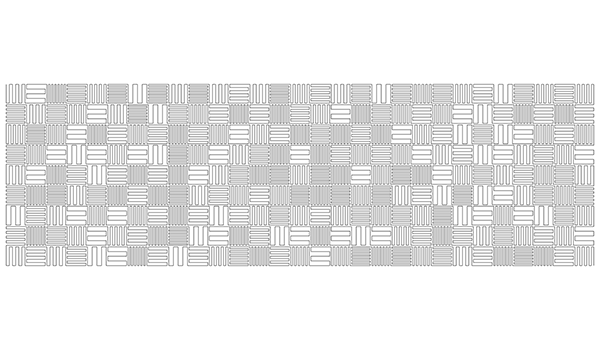Pattern & Animation with Python & DrawBot

Cost: $485.00
Instructor(s): Maurice Meilleur
2 In-Person Sessions (Important: please read policies below)
Sunday, June 19 & Monday, June 20, 2022
10:00 am to 5:00 pm
LOCATION: Cooper Union Campus
IMPORTANT: to participate in classes on campus
- Please be prepared to arrive up to 30 minutes early on the first class to present proof of vaccination, booster and a state issued picture ID in the lobby of 41 Cooper Square.
- You must wear a mask at all times inside the school.
- A school ID will be issued so you can enter all subsequent weeks by showing it to the guards. A photo will be taken on the first evening of your class for the ID card.
- Unvaccinated individuals will not be allowed access to campus buildings.
- If you are not able to arrive up to 30 minutes before class on the first session or within 1 hour of the start of the first class session, please request to withdraw from class by email. Policies apply.
Typographics “in-person” attendees can receive a 10% discount on this workshop. Look for the discount code on the ticket confirmation from Eventbrite.
About as long as we’ve been making objects and marks, humans have been making patterns. As we began to describe more precisely to each other our patterns and how to make them, we effectively started to code them. (In fact, the instructions for the first general-purpose computers were modeled on the punchcards used to control mechanical looms making patterned textiles.) Humans have also always been fascinated by movement, both actual and implied in the shapes of what we see and make. A lot of mathematics comes, not just from our experience with natural and human-made shapes and patterns, but also from our desire to describe and understand motion.
Writing code is an excellent tool to explore both pattern and movement. You can start with a few elements and conditions—a set of shapes and colors, some simple directions and conditions—and use them to quickly cover a virtual surface, create countless variations and iterations, and set what you’ve made in motion. Explaining how to do this to a computer helps you understand what you’re making better yourself. And small changes—even mistakes—in the code, and unanticipated effects and outcomes, can sometimes result in something better than what you’d originally planned. They can help you discover new design ideas, directions, and possibilities.
Participants in this two-day in-person hands-on tutorial workshop will be working in the free and user-friendly application DrawBot for the Macintosh operating system. You should have some previous experience writing code in Python—a two-day workshop or the equivalent is sufficient, and we’ll make sure to review some key Python concepts and methods with our first sketches. No previous experience using DrawBot is needed. You’ll learn methods for describing, creating, styling, positioning, and distributing shapes in patterns, with parameters you can adjust to alter the output. You’ll also learn different methods to animate your creations. There will be a dedicated Slack channel for the course through which participants can share code and output and ask and answer questions.
Your sketches will produce high-quality vector art that you’ll be able to save as animated .gifs or .mp4 videos, single images or animation frames in .jpg or .png formats for further processing in other applications, .svg outlines to be sent to pen or cutting plotters, or .pdfs for print. You can use your patterns and animations for surface, packaging, and screen/interactive designs. Also, if you’ve ever been interested in generative and computational design, patterns and animations are a great way to get started.
We hope you can join us!
Required Materials
- Macintosh laptop computer running OS 10.9 or higher
- Sketching materials, i.e. sketchbook, markers, pencil
Class size is limited to 16 students.
Course Code: PA22




